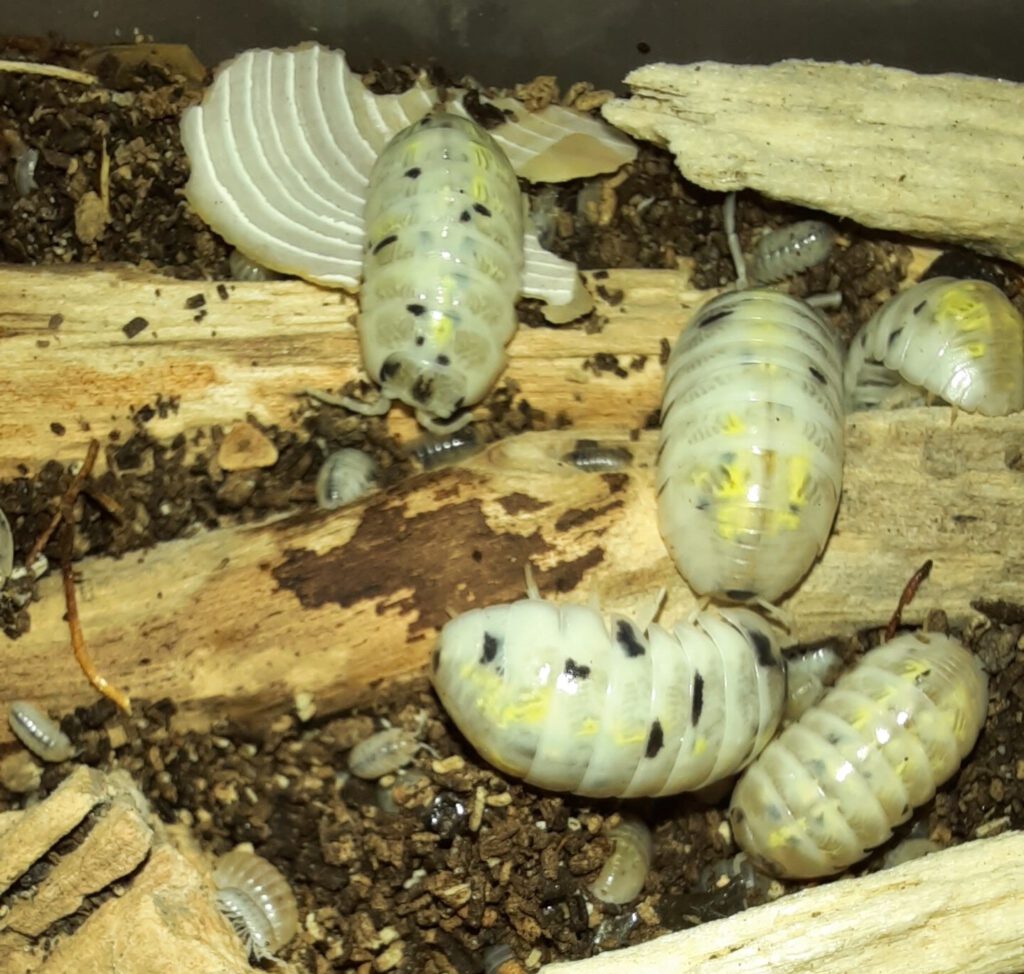This article is not yet finished!
If you want to write/help with this or another (or new!) article, please contact me 🙂
(as of 17.03.2024)

Isopods molt in two parts. First the posterior half and a few days later the anterior half.
The molting can be divides in five phases (Also called phases A-E):
(As described in A. vulgare)
- The post-molting stage – here the cuticle is not yet hard but soft and shiny and sticky (1-2 h)
- Cuticle hardens and the molted half of the body expands to its full size, giving the isopod the look that one half is weirdly bigger (several hours)
- Cuticle continues to harden and the coloration reaches its final state (15-60 days)
- Preparing for the next moult:
- I. A pair of white plates develops on each of the thoracic sterna
- II. Within one day those plates disappear again
- III. Half the body is compressed for a few hours
- Active molting
There is no special time of the day or night an isopod starts to molt. They often eat the shedded cuticle themselves or other individuals eat it.
During this cycle, there are changes in the hepatopancreas, which is an organ that performs functions similar to both the liver and pancreas in mammals.
Once before the molt starts (before the posterior molt) and again after the molt is completed (after the anterior molt) the B-cells in the hepatopancreas enlarge and then secrete hepatopancreatic fluid. This fluid has a pH of 5.5 and therefore the blood pH drops.
As to how the new cuticle forms:
During the cycle the cells of the outer cuticle (epidermis) develope a lot of vacuoles and the layer below the epidermis (subepidermis) grows and spreads. The new outer layer (epicuticle) appears before the inner layer (endocuticle).
At least in O. asellus, the seperation of the old cuticle (apolysis) functions due to internal hydrostatic pressure and not due to water intake.
Sources
Warburg, M. R. (1993). Evolutionary Biology of Land Isopods. In Springer eBooks. https://doi.org/10.1007/978-3-662-21889-1
